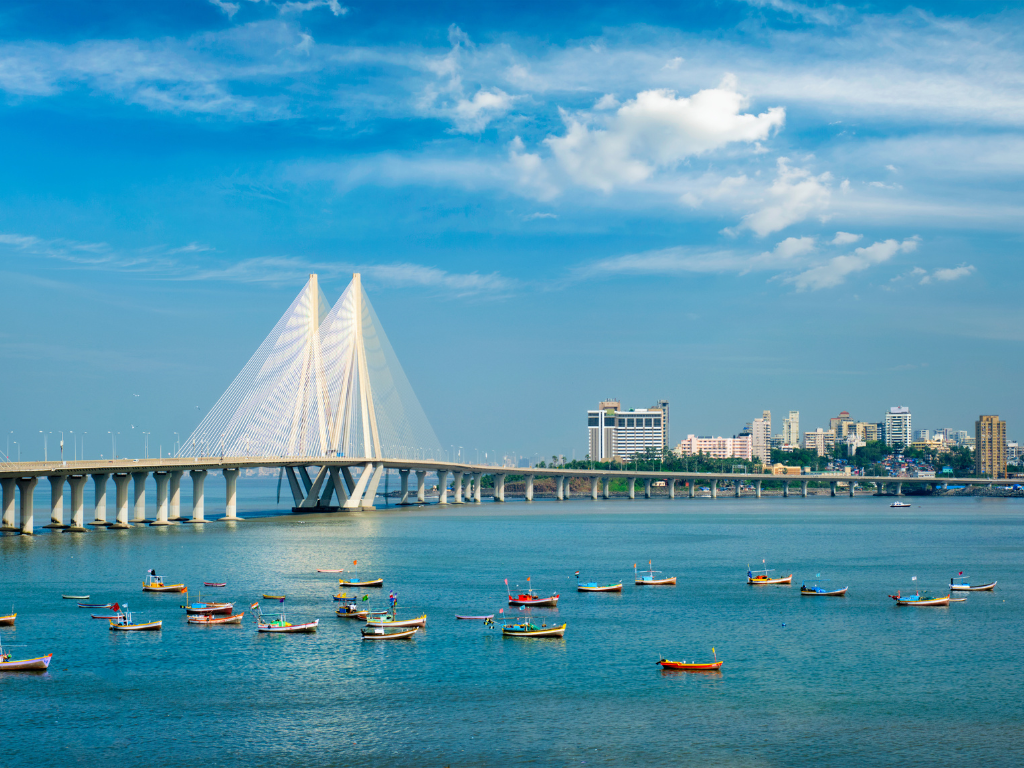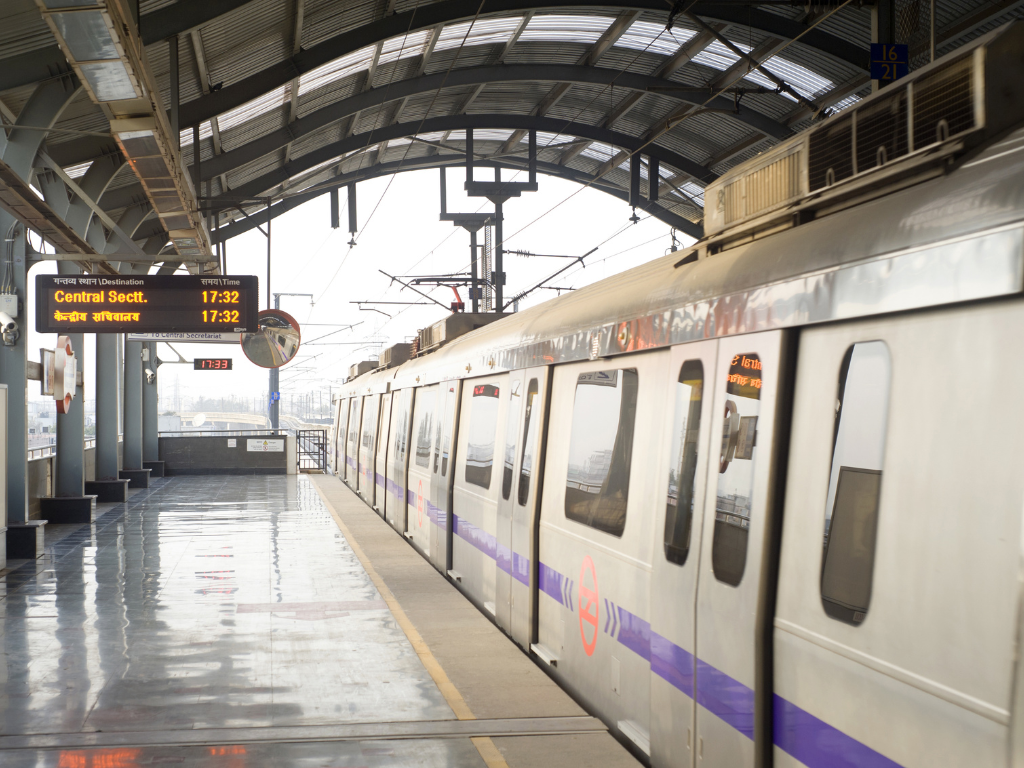
Creating the Future: India’s Critical Role of Infrastructure in Reaching Sustainable Development Goals
Infrastructure is essential for the pursuit of sustainable development because it supports social advancement, economic expansion, and environmental sustainability. Its relevance is amplified within the framework of the Sustainable Development Goals (SDGs), which were established by the United Nations in 2015 as part of the 2030 Agenda for Sustainable Development, aiming to address various global challenges and improve the well-being of people and the planet, by directing nations towards the elimination of poverty, protection of the environment, and promotion of global prosperity.
As India moves closer to achieving the Sustainable Development Goals (SDGs), the construction of strong, environment-friendly infrastructure becomes essential to reaching these ambitious goals. Facilities build the basis for a bright and equal future by enabling innovation and promoting economic resilience in addition to enhancing access to essential services. This blog analyses important ways to realize the transformative potential of infrastructure and examines its role in India’s journey towards meeting sustainable development goals.
The Need to Meet SDGs:
India faces significant challenges in meeting the varied requirements of its residents while preserving the environment due to its rapidly growing population and increasing urbanization. To meet the Sustainable Development Goals (SDGs), it is necessary to build infrastructure that is both adequate for present requirements and proactive for anticipating future needs and reducing negative environmental effects. The SDGs can only be advanced with the support of sustainable infrastructure, which fosters inclusivity, resilience, and resource efficiency. Such infrastructure is essential for fulfilling India’s commitment to the SDGs since it promotes long-term socioeconomic development and environmental sustainability.
Key Areas of Focus:
1. Infrastructure for Transportation:
Promoting social inclusion and economic growth relies on enhancing connectivity via meticulously designed transportation networks. India has to put more money into developing road networks, updating its railways, and creating sustainable urban transport systems. Adopting green technology may substantially decrease carbon emissions while preserving air quality. Examples of these technologies include electric cars and effective public transport networks.
Industry, Innovation, and Infrastructure (SDG 9):
With a total length of more than 5.8 million km, including both national highways and rural roads, our country has one of the greatest road networks in the world. An important program for road betterment that aims to increase efficiency and connectivity nationwide is the Bharatmala Pariyojana. The Sagarmala Program also seeks to encourage industrialization and improve connectivity along India’s rivers and coast.
Sustainable Cities and Communities (SDG 11):
Using green technology can improve air quality and significantly reduce carbon emissions. These technologies include efficient public transportation systems and electric automobiles. Cities are the growth engines and According to the official forecasts by the United Nations, cities are expected to have 6.3 billion inhabitants by 2050. cities disproportionately contribute as much as 70 percent of the world’s greenhouse gas emissions, although they occupy just 2 percent of the land area. There is a need to streamline programs and drive focus on 2 areas to meet the SDG goals:
- Planned development of cities including last-mile connectivity to decongest cities. Looking at urban development through a systems approach.
- Narrowing the urban-rural divide and taking amenities and opportunities to rural areas to stop migration
The Smart Cities Mission is a flagship initiative designed to leverage infrastructural advancements and technology to support sustainable urban development. Despite the advancements made, many urban areas continue to face problems with traffic, pollution, and poor infrastructure.
2. Energy Infrastructure:
Lowering carbon dependency while combating climate change requires a shift to renewable energy sources. Investing in solar, wind, and hydroelectric power plants guarantees energy security, creates jobs, and diversifies the energy mix.
Affordable and Clean Energy (SDG 7):
SDG 7 aims to address energy poverty, reduce reliance on fossil fuels, and improve energy access, particularly in rural and remote areas. The power and transport sectors together accounted for more than two thirds of CO2 emissions in 2019.
India has set high goals for increasing its capacity for renewable energy, with a focus on solar and wind power in particular. We have made great strides towards increasing its renewable energy capacity; as of 2021, installed capacity exceeded 100 GW.
Climate Change (SDG 13):
SDG 13 addresses the broader challenges of climate change, including its impacts on ecosystems, agriculture, water resources, human health, and socio-economic development.
The Pradhan Mantri Kisan Urja Suraksha evam Utthaan Mahabhiyan launched in 2019, promotes the use of solar energy in agriculture by providing financial support to farmers for installing solar pumps, solarization of existing grid-connected agricultural pumps, and setting up solar power plants on barren/fallow lands.
3. Water and Sanitation Infrastructure:
The health and welfare of citizens depend heavily on having access to clean water and sanitary facilities. The government of India is dedicated to promoting hygienic behaviours and enhancing sanitation infrastructure, as seen by programs like the Swachh Bharat Mission. To mitigate water scarcity and strengthen resilience against climatic variability, investments in wastewater treatment plants, rainwater harvesting systems, and water conservation measures are essential.
Water and Sanitation Infrastructure (SDG 6):
The Jal Jeevan Mission seeks to improve access to clean water by giving all rural families a piped water supply.
With an emphasis on ending open defecation and encouraging the development of toilets, the Swachh Bharat Mission has played a significant role in advancing sanitation infrastructure.
4. Digital Infrastructure:
Leveraging digital technologies is essential for fostering innovation, enhancing productivity, and promoting inclusive growth. India’s Digital India initiative aims to bridge the digital divide and empower citizens through access to digital services and information. Building robust broadband networks, promoting digital literacy, and supporting entrepreneurship in the technology sector are pivotal for driving digital transformation and realizing the potential of the digital economy.
Industry, Innovation, and Infrastructure (SDG 9):
This goal emphasises the necessity of encouraging innovation, especially in the fields of technology and entrepreneurship, to boost productivity, stimulate economic growth, and address development issues. The National Broadband Mission was established in 2019 to give all individuals reasonably priced access to broadband, notably those who reside in rural and remote areas. The objectives are to promote broadband use for socio-economic development, boost connectivity via satellite technology, and develop optical fibre networks.
Partnerships for the Goals (SDG 17):
The significance of international collaboration and partnerships in accomplishing sustainable development objectives is the goal.
The National Digital Health Mission was established in 2020 to create a national digital health ecosystem that gives every citizen easy access to healthcare services.
The goal is to encourage collaboration between the government, technology companies, healthcare providers, and other stakeholders while furthering the development of digital infrastructure in the healthcare industry.
Opportunities and Challenges:
Although there is no disputing the benefits of sustainable infrastructure, there are still several hurdles in the way of its implementation in India. These consist of institutional capacity deficits, legal hurdles, and financial constraints. But these challenges additionally present chances for innovation and cooperation. Investment in sustainable infrastructure projects can be expanded while retaining accountability and transparency with the use of public-private partnerships (PPPs), innovative financing techniques, and legislative changes.
Furthermore, qualified employees capable of pioneering the development of sustainable infrastructure may be generated through utilizing the demographic dividend as well as promoting skill development in growing sectors like digital technology and renewable energy.
India can create a resilient, inclusive, and prosperous future for its citizens while preserving the environment for coming generations if it prioritizes sustainable development pathways and adopts creative solutions. To achieve this goal of sustainable development through infrastructure, collaboration between the public and commercial sectors, civil society, and foreign partners is crucial. Let’s work together to clear the path for a just and sustainable future for everybody.
Deep dive into the Government schemes for each SDG goal:
- No Poverty:
Mahatma Gandhi National Rural Employment Guarantee Act, 2005 (MGNREGA): helps to reduce poverty by giving rural households access to guaranteed wage jobs.
- Zero Hunger:
- National Food Security Act, 2013 (NFSA): Guarantees food security by giving subsidised food grains via the Public Distribution System (PDS) to eligible recipients.
- Good Health and Well-being:
- Ayushman Bharat Pradhan Mantri Jan Arogya Yojana, 2018 (AB-PMJAY): Covers secondary and tertiary healthcare services for economically disadvantaged families through health insurance.
- Quality Education:
- Sarva Shiksha Abhiyan, 2001 (SSA): Aims to provide free and obligatory primary education to all children between the ages of 6 and 14.
- Gender Equality:
- Beti Bachao Beti Padhao, 2015 (BBBP): Seeks to alleviate gender disparities and advance girls’ welfare and education.
- Clean Water and Sanitation:
- Jal Jeevan Mission, 2019: seeks to increase access to clean water and sanitation by providing piped water supplies to every rural household by 2024.
- Affordable and Clean Energy:
- Pradhan Mantri Ujjwala Yojana, 2016 (PMUY): Provides affordably priced and environment-friendly energy to low-income homes via free LPG connections in order to encourage the use of clean energy for cooking.
- Decent Work and Economic Growth:
- Skill India Mission, 2015: Seeks to improve workforce employability and skills through a range of skill development initiatives.
- Industry, Innovation, and Infrastructure:
- Digital India Programme, 2015: Seeks to advance digital innovation and infrastructure in order to make India a knowledge economy and society empowered by technology.
- Reduced Inequality:
- Scheduled Caste and Scheduled Tribe (Prevention of Atrocities) Act, 1989: Aims to lessen social inequality by preventing crimes against marginalised groups.
- Sustainable Cities and Communities:
- Smart Cities Mission, 2015: Utilises advances in technology and infrastructure to create smart, sustainable cities.
- Responsible Consumption and Production:
- Swachh Bharat Mission, 2014: Seeks to promote ethical waste management techniques and attain universal access to sanitation..
- Climate Action:
- National Action Plan on Climate Change, 2008 (NAPCC): Describes methods and plans for reducing and adapting to the effects of climate change..
- Life Below Water:
- Project Dolphin, 2020: Aims to preserve and safeguard the dolphin population in rivers and seas.
- Life on Land:
- National Mission for Green India, 2014 (GIM): seeks to improve ecosystem services, encourage biodiversity protection, and increase forest and tree cover.
- Peace, Justice, and Strong Institutions:
- National Legal Services Authority, 1995 (NALSA): Offers free legal aid to underprivileged and vulnerable populations, as well as facilitating their access to the justice system.
- Partnerships for the Goals:
- Pradhan Mantri Jan-Dhan Yojana, 2014 (PMJDY): seeks to encourage collaborations between financial institutions and the government while offering banking services to all households.
India’s dedication to accomplishing Sustainable Development Goals and raising citizen well-being levels while advancing sustainable development is exemplified by these programs and initiatives.




Leave a comment